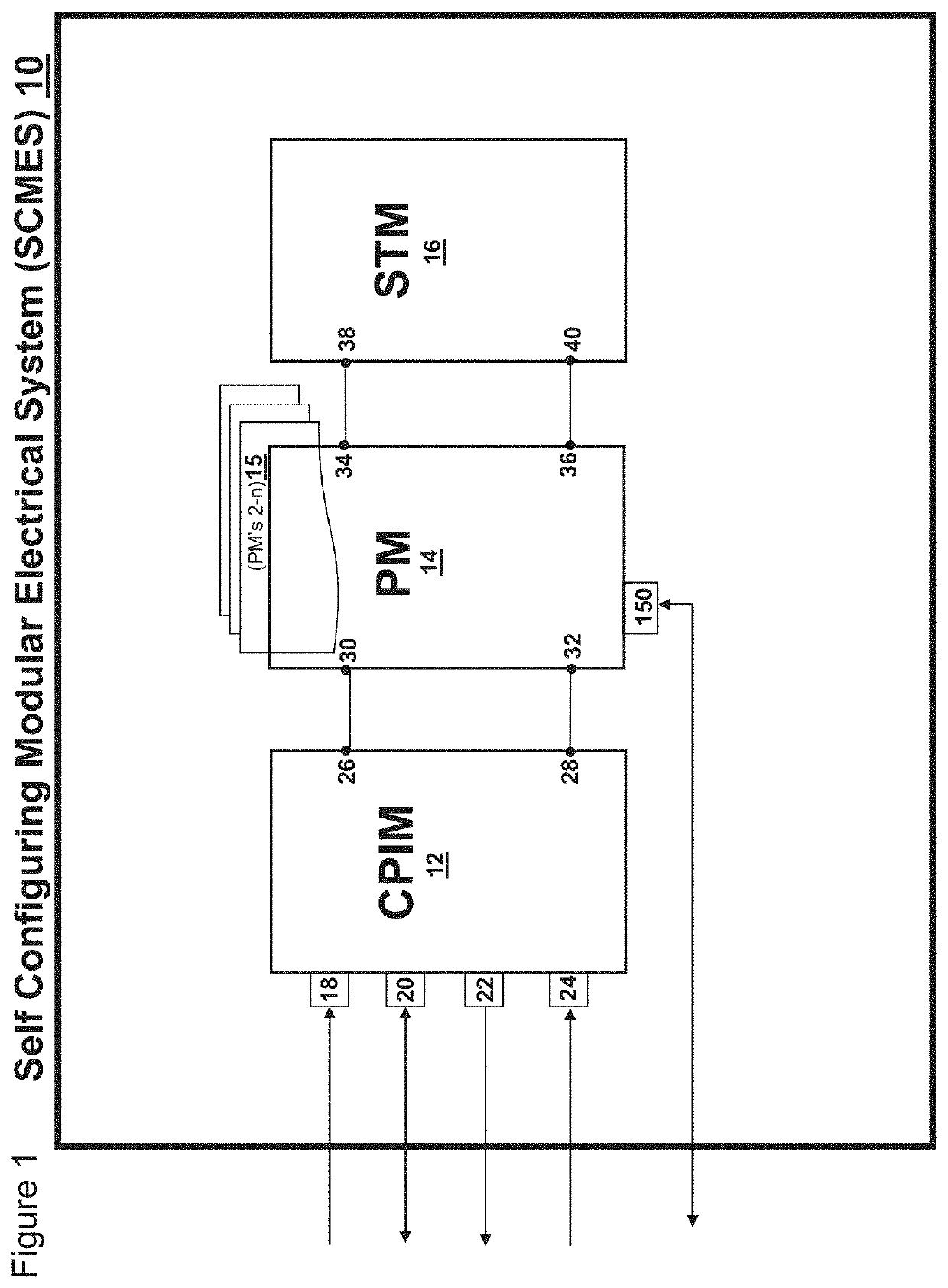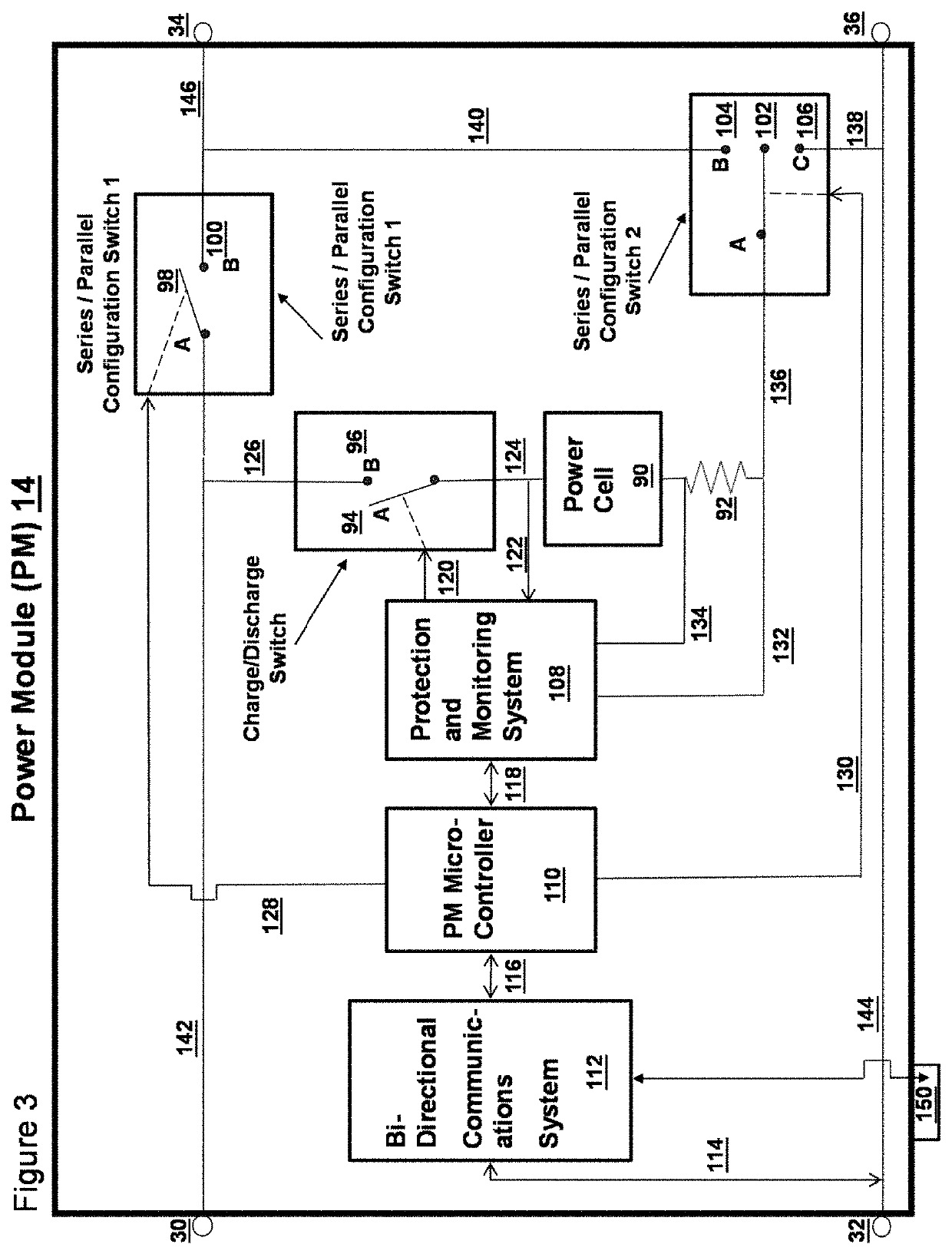Although existing power systems are capable of simultaneously carrying data and providing
power over the same electrical lines while also being capable of autonomously and instantaneously re-configuring themselves to dynamically meet changing mission needs or internal failures, they all rely upon complex switching matrices involving complex
chassis structures and wiring harnesses due to their centralized control and monitoring architecture which does not have a simplified way to monitor each individual
cell locally with a controller / cell co-located design.
As such, these systems could never be adapted to an
aerospace application where size, weight and complexity needs to be minimized while at the same time being capable of surviving a harsh earth, launch or orbital environment due to their cumbersome nature which doesn't allow for efficient / lightweight packaging for use in these environments.
While some of these present electrical systems can provide some real-time health status feedback and protection, they fall short in performance if an internal
battery cell or communications pathway fails, leaving the system unable to efficiently compensate for the
resultant loss of power or communications capability.
However, there are a limited number of inventions addressing modular battery packs and modular
control electronics for batteries.
Here again, Ashley does not discuss anything that resembles his
control electronics wiring simultaneously carrying data, nor is it capable of automatically reconfiguring itself with a simple architecture if an upset occurs.
With
Eaves's arrangement as intended and designed, it is not possible to create a system that delivers communications and power simultaneously over the same lines, nor is it possible for it to automatically reconfigure itself internally, especially with only two wires connecting between his components, in addition, it and all the others are not of a design / architecture nature whereby they can possibly meet stringent
aerospace design criteria of minimal size / weight and also be robust enough to survive the
operational requirements and rigors of a harsh earth,
space launch or orbital environment.
(a) Existing battery / power systems no matter how advanced, are not capable of autonomously reconfiguring their internal series /
parallel arrangement in an efficient manner with individual cell-level control to meet evolving mission needs, nor adapt to an internal
battery cell failure.
(b) The manufacture of all present battery systems presently dictates that they are limited in expandability and
reconfigurability due to common manufacturing processes that are rigid and without modification unless sufficient funding is available, however even then, they can't match the ease of flexibility as demonstrated by this invention.
(c) No efficient capability exists to automatically protect and reconfigure any present battery on a cell level from the results of a
short circuit, under
voltage or over charge situation.
(d) Existing battery systems are stand-alone and cannot receive configuration or control input internally on an individual cell basis or simultaneously from an
external source, thus limiting it from being interactive with other power systems in a ‘
plug and play’ manner or in a network of distributed components.
(e) There is no possible way to configure any existing battery cells in a distributed modular way whereby their internal workings are survivable and sustainable in a conventional failure
scenario.
(f) There is no ruggedized or simple 2 wire
battery system existing which can autonomously reconfigure itself into a new series or parallel configuration depending on charge /
discharge requirements, and also instantly connect to an available
spare cell to replace a cell gone bad, while at the same time be fragmented into any number of individual components for mounting in various locations to increase
survivability while decreasing overall weight.
(g) Present battery issues include the cost of operating and maintaining them over extended periods of time, especially when it comes to having insight into the properties of each and every cell and their present state of arrangement with each other, whether in series or parallel, and their ability to reconfigure themselves if there is a problem detected, which if unresolved can terminate the operation of the entire battery.
(h) A centrally controlled
battery system cannot function as efficiently at full capacity as a distributed system can if a single cell fails internally.
(j) Existing batteries utilizing standard centralized
electronics require special thermal design considerations that would not be possible given the complex requirement for autonomous internal reconfiguring which would also require that a
spare cell is ready and functional to be operationally switched into use at a moments notice to continue a mission without interruption.
(k) Present battery power systems preclude the ability to rapidly and efficiently integrate an external power source to augment existing
power processing parameters.
(l) Existing battery systems cannot be commanded on an individual cell basis via internal or external
software into a new state, and leaves a user helpless if mission requirements change spur of the moment, or if a presently available battery has an
internal cell failure.
(m) There is no efficient method with a decentralized
control system for gathering live data from an individual cell within a group of cells that comprise a battery, whether arranged in series or parallel.
(o) Unfortunately the battery systems of today are mostly comprised of obsolete matrix-like wiring technology and is not nearly as efficient as it could be based upon components available in the marketplace, thereby allowing for a complete battery failure if a single cell within an existing battery fails.
(p) No system exists which is able to provide cell-level individualized locally controlled
live feedback or monitoring of the
voltage or temperature of individual battery cells that can internally and autonomously reconfigure themselves from series to parallel arrangements.
(q) Typical existing
aerospace battery and power systems require extensive and excessive testing prior to use to insure as greatly as possible that the system will work when it is expected to.
(r) Existing battery / power systems can only provide rudimentary centralized-based monitoring and cannot provide information on internal configuration states in addition to health monitoring to assist in detecting a cell which may be going bad which could bring down the operation of the entire battery.
(s) The ability to rapidly balance and condition a cell which can be autonomously reconfigured on an individual cell basis is not easily accomplished with any prior art inventions or anywhere existing in the battery or power industry.
The above-described shortcomings clearly illustrate the limited nature of all existing battery / power supply systems that absolutely fall short in being truly robust in capability mainly due to their matrix-like switching and wiring which is not practical for manufacture while also lacking the absolutely highest degree of safety and reliability possible.
 Login to View More
Login to View More  Login to View More
Login to View More 


